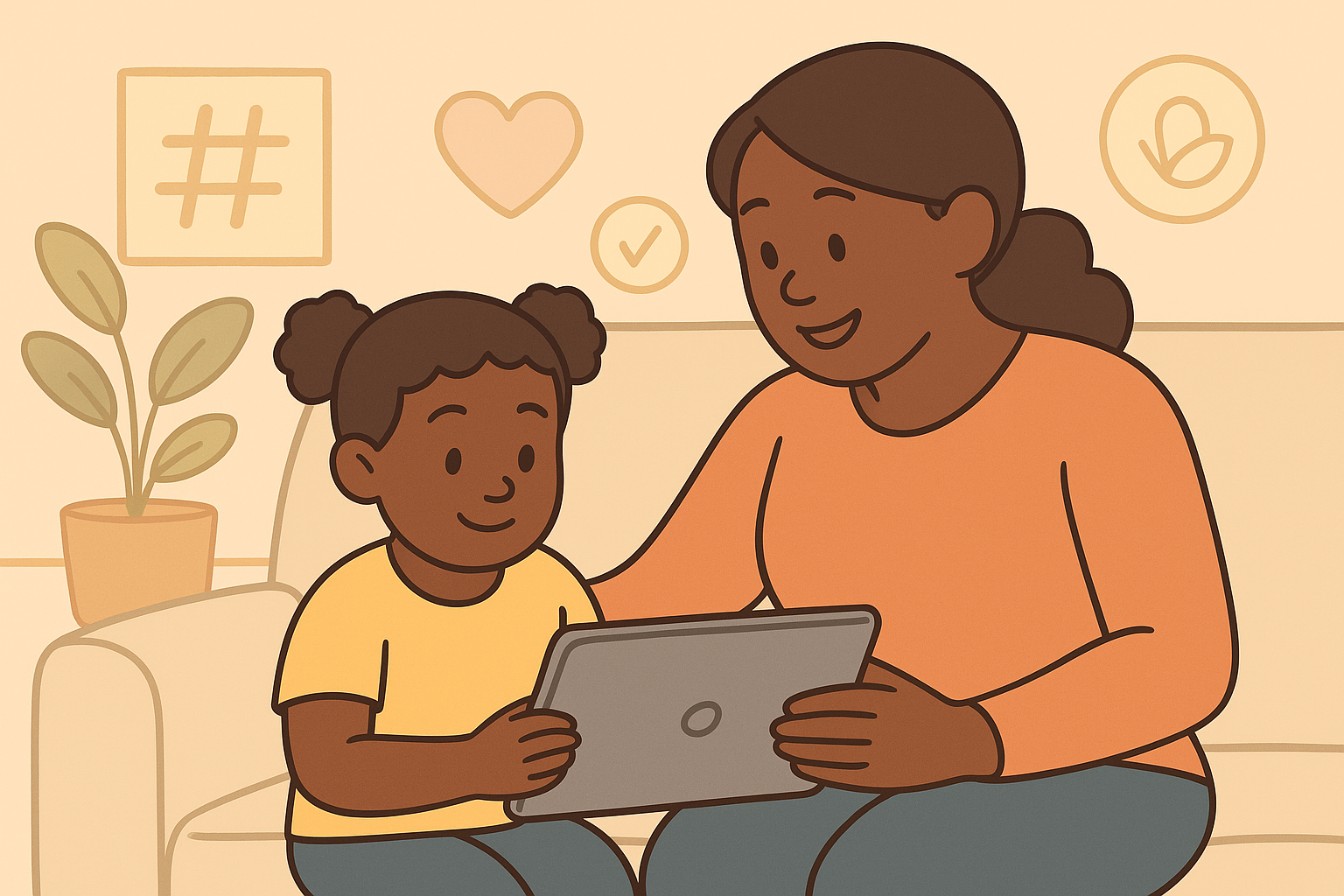How to Talk to Kids About Online Ads and Influencers
How to Talk to Kids About Online Ads and Influencers
If your child has ever said, “Can we buy that?” after watching a video — you’re not alone. Today’s kids grow up surrounded by bright thumbnails, unboxing videos, and friendly creators who feel just like friends.
But behind the smiles, many are selling something.
Teaching children to recognize online advertising isn’t about distrust — it’s about awareness. When kids can spot persuasion, they become more confident, conscious media users.
Why Kids Struggle to See Ads as Ads
Children, especially under age 8, have a hard time distinguishing entertainment from advertising. They process “influencer” videos as genuine sharing — not marketing.
That means:
When a creator recommends a toy, kids assume it’s a real opinion.
When a logo appears often, they remember it subconsciously.
When an ad feels like fun, it doesn’t feel like selling.
💡 Fuzzigram tip: Kids don’t need suspicion — they need translation. Help them see the story behind what they’re watching.
See YouTube Kids and Beyond: How to Guide Digital Discovery Safely.
Step 1: Start With Curiosity, Not Warnings
Ask open questions instead of lectures. Try:
“What do you think this person is trying to tell us?”
“Why do you think they showed that brand so many times?”
“Do you think they got paid to talk about that?”
The goal is to make kids feel smart, not scolded.
💡 Fuzzigram tip: Curiosity invites conversation. Judgment shuts it down.
See The Hidden Power of Co-Viewing: Watching Together Builds Connection.
Step 2: Teach the “Why” Behind Ads
Explain that:
Companies make products.
Creators promote them.
The goal is to get attention — and sales.
Simple language works best:
“Sometimes people get free things or money for talking about them online.”
“They can still like the product — but they’re also doing their job.”
Once kids understand motivation, they begin seeing ads differently.
Step 3: Show How to Spot Sponsorship
Next time you watch together, look for clues:
Hashtags like #ad, #sponsored, or #partner
Brand logos or product placement
Links to “Shop Here” or “My Favorites” pages
Repeated excitement around specific items
Turn it into a game — “Find the Ad!” Kids love it, and they’ll learn without fear.
See Tech Boundaries That Stick: Setting Limits Without Meltdowns.
Step 4: Balance Media With Real-World Experience
For every hour of digital content, give kids something real to do — cook, create, build, draw. It keeps imagination rooted in doing, not buying.
💡 Fuzzigram tip: Real play rewires the brain for creativity, not consumption.
Step 5: Talk About Feelings, Not Just Facts
Ask your child:
“How did that video make you feel?”
“Did you feel like you wanted something afterward?”
Helping them notice emotional reactions builds self-regulation — a key media literacy skill.
See The Science of Screen Time: How Devices Affect Kids’ Brains.
Step 6: Model Healthy Media Habits
Kids learn from your patterns too. If you follow influencers, narrate what you’re doing:
“This person shares good ideas, but they also sell things — so I only buy what I really need.”
Modeling transparency turns abstract lessons into visible habits.
Step 7: Encourage Creative Empowerment
Instead of only consuming media, help kids make their own — draw comics, film pretend reviews, or write stories. When they step into the creator role, they understand storytelling — and persuasion — from the inside.
💡 Fuzzigram tip: The best defense against manipulation is creation.
Your child doesn’t need to fear influencers — they just need the tools to understand them. When kids can separate fun from sales, they stay curious, confident, and connected to what’s real.
Because raising a mindful media user isn’t about controlling their clicks — it’s about shaping their awareness.
This content is for educational purposes and is not a substitute for professional medical or psychological advice.
Popular Parenting Articles


